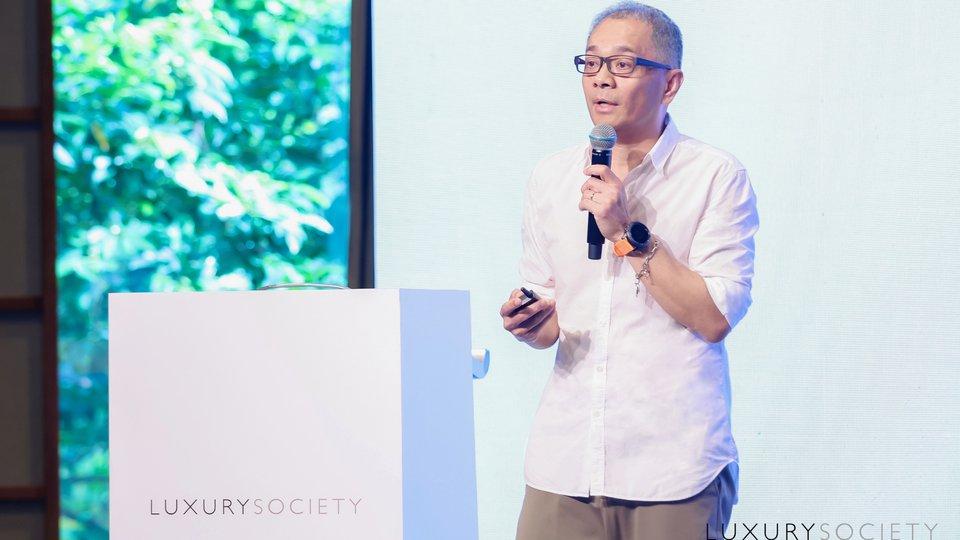Sales in the Chinese luxury auto market are set to slow, but China remains an attractive opportunity for executives where cultural customisation will be key to survival

Sales in the Chinese luxury auto market are set to slow, but China remains an attractive opportunity for executives where cultural customisation will be key to survival
Bentley’s EXP 9 F Luxury SUV Concept
Sales in the Chinese luxury auto market are set to slow, but China remains an attractive opportunity for executives where cultural customisation will be key to survival
The Continued Promise
Gone are the glory days of growth, when car sales could surge 46 per cent in one year – as they did in 2009 – according to Reuters. Instead industry executives and analysts expect growth to slow to an average of 7-8 per cent this decade, amid higher fuel costs and a decelerating economy (Bloomberg).
There is said to be plenty of growth left; even the most conservative of forecasts have China’s auto market surging to 30 million vehicles a year by 2020, from last year’s 18 million. The more enthusiastic think volume could even reach 40 million and brands are acting accordingly.
Porsche has confirmed plans to accelerate China dealership openings in 2012 by more than 40 per cent, increasing the number of showrooms to about 80 next year and about 100 by 2015. General Motors will bring a new Cadillac model to China each year through 2016, in a bid to raise profit margins and develop Cadillac as a top global brand to hedge against the risk of declining sales of high-profit trucks.
Mercedes-Benz has just launched the Beijing Sanlitun AMG Performance Centre, its first stand-alone AMG store in the world, carrying only AMG-branded products, including vehicles, parts and AMG Collection accessories Motor Authority. BMW have taken things one step further and will open a new Designworks studio, with a Connected Drive Lab, in Shanghai’s upscale Huangpu District.
“ There is said to be plenty of growth left; even the most conservative of forecasts have China’s auto market surging to 30 million vehicles a year by 2020 ”
The China Limited Edition
Further commitment to the Chinese market was evident in the sheer volume of limited edition ‘Made for China’ models, by everyone from Lotus to Aston Martin to Bentley and Lamborghini. The Chinese market is said to be so large and so important that carmakers now use the annual auto show to showcase sedans and SUVs with China-specific features (Forbes).
Aston Martin unveiled three special edition models in its “Dragon 88” series, detailed to “celebrate the mystical qualities of the dragon symbol,” including 24-karat gold plated badging, gold-stitched dragon headrests and gold interior accents. Only 88 of these models will be produced, commanding price tags of over 5 million Yuan (almost $800,000).
Lotus debuted a China Limited Edition of its Evora GTE, featuring suspension tuning designed to suit Chinese roads and carbon fibre trim to give them a performance feel. Each of the cars – limited to a production run of 118 units – feature a numbered plaque inside, marked with the ‘China Limited Edition’ insignia.
Jaguar equipped its latest XJ Ultimate with embedded iPad’s, a staple in the China market, whilst Bugatti built its Veyron Grand Sport Wei Long 2012 Edition to commemorate the Chinese year of the Dragon. Rolls-Royce debuted its Phantom Series II with an extended wheelbase, as did BMW with its 3 Series exclusively for the Chinese market. An increasingly important feature in offering the best rear seat travel comfort, in an increasingly chauffer-driven society.

Interior details of the Bugatti Veyron Grand Sport Wei Long limited edition
The Rise of the SUV
Despite the push in green and hybrid cars in previous years, 2012’s Beijing Auto Show was all about gas-guzzling SUVs. According to CNN, crowds swooned over the new Lamborghini Urus SUV concept car, a potential competitor to the popular Porsche Cayenne.
Bentley debuted it EXP 9 F Luxury SUV Concept, featuring interiors adorned with aluminium, bronze and gunmetal, to offset soft-touch leather contrasts, saddle leather on seat backs and reversible silk wool floormats.
“We know that many Bentley customers already own SUVs, admiring their style, luxury, performance and versatility,” revealed Bentley boss Wolfgang Durheimer to Car Advice. “With EXP 9 F, Bentley is making a clear statement of intent that we have both the expertise and desire to meet and exceed their expectations.”
Joe Hinrichs, president of Ford’s Asia Pacific and Africa region, identified the SUV segment in China as “one of the fastest growing segments in the industry.” Zhang Xin an analyst at Guotai Jun’an Securities agreed, explaining that the cost to manufacture a hybrid versus an SUV was about the same, and therefore not profitable for automakers to pursue green cars given the current market development for SUVs.
“ The market’s certainly becoming more varied in terms of requirements. There is growing vehicle personalisation, growing SUVs and growing luxury ”
“The market’s certainly becoming more varied in market requirements,” explained said Kevin Wale, head of General Motors’ China operations to Reuters. “There is growing (vehicle) personalisation, growing SUVs and growing luxury whereas previously it was more a more basic form of transportation most people perceived China to be.”
Survival, according to Mr. Wale, will require a sophisticated understanding of China’s increasingly discerning consumers. “Every trend that has been in the auto world is starting to come to China, and (auto executives) need to show up and see what’s happening.”
To further investigate the Luxury Automotive sector on Luxury Society, we invite your to explore the related materials as follows:
– 8 “Made For China” Luxury Cars
– The Luxury Hybrid Automobile: Future or Fallacy?
– Optimism Shines at Frankfurt’s 2011 Motor Show










